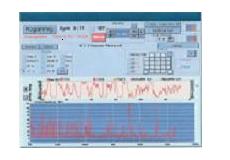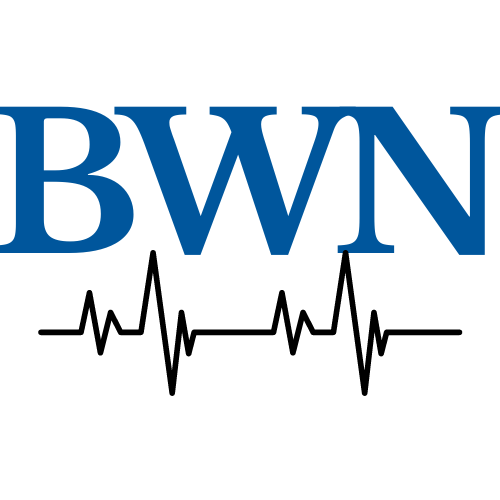
EEG Biofeedback (Flexyx Neurotherapy System)
EEG Neurofeedback is a noninvasive procedure that involves monitoring and analyzing EEG signals read from sensors on the scalp. Those data then determine the feedback signal that is directly linked to the treatment signal. EEG slowing is present in people who are symptomatic with many problems including post-concussion syndrome, PTSD, depression, and learning disabilities. A recording of an EEG that has slowing present shows a relative excess of energy in the slowest waves. The Neurologist, John Hughs’ description in 1994 of these imbalances wrote, “An adult should not have theta or delta patterns in the waking record and if they appear, they are called slow wave abnormalities. The slower the frequency and the more often it appears, the greater the degree of abnormality. Abnormal slow waves appear when the brain cells are damaged regardless of the cause of the damage.” (Hughes J.R., 1994. EEG in Clinical Practice, 2nd Ed. Butterworth-Heinemann, Newton, MA.)
EEG abnormalities are associated with mild to severe brain trauma and can be the result of a variety of causes such as blunt force, whiplash, emotional trauma such as PTSD, toxic exposure, or infection. Regarding TBI, “Major lesions tend to occur predominantly in the frontal and temporal poles, the brain stem, and the corpus callosum, that thick band of neural tissue that maintains the most efficient and the fastest connections between the brain hemispheres.” “Diffuse damage to these areas causes attentional deficits, slow thought processing and diminished bilateral integration.” (Lezak, M., 1988. “The walking wounded of head injury: When subtle deficits can be disabling.” Trends in Rehabilitation, Vol. III, #3.) Pain and headache are also common results of brain dysfunction. Note that these observations but document that the real-life effects of TBI were understood at least 30 years ago,
Barring a new trauma there have not been reports of relapses or regressions after FNS treatment.
M.L. Esty: Published Peer-Reviewed Research /Invited Articles:
Nelson DV, Esty ML (2018) Minute Pulsed Electromagnetic Neurostimulation for Mixed Trauma Syndromes. Journal of Evidence-Based Integrative Medicine, Vol 23:1-10
Keyser D, Rapp P, Trongnetrpunya A, Nelson D, Esty ML (2017) Uniformed Services University, Traumatic Injury Research Program: Relief of Persistent Post-Concussive Symptoms Following Flexyx Neurotherapy and P-300 as a Potential Biomarker: Pilot Study. At Military Health Sciences Research Symposium.
Nelson D, Esty ML, Barone B (2017) Complementary and Integrative Treatments in Psychiatric Practice. Chapter 26: Neurofeedback Therapy in Clinical Practice. Pub. American Psychiatric Association
Nelson DV, and Esty ML (2016). Neurotherapy as a catalyst in the treatment of fatigue in breast cancer survivorship. EXPLORE: July/August The Journal of Science and Healing. Vol. 12, #4. http://dx.doi.org/10.1016/j.explore.2016.04.002
Nelson DV, and Esty ML (2015). Neurotherapy of Traumatic Brain Injury-Posttraumatic Stress Symptoms in Vietnam Veterans. Military Medical Research. 180, 10e1111
Nelson DV, and Esty ML (2015). Neurotherapy for chronic headache following traumatic brain injury” Military Medical Research, 2:22. DOI 10.1186/s40779-015-0049-y
Nelson DV and Esty ML (2012), Neurotherapy of Traumatic Brain Injury/Post Traumatic Stress Symptoms in OEF/OIF Veterans. The Journal of Neuropsychiatry & Clinical Neurosciences, 24:2, Spring. 237-240. http://neuro.psychiatryonline.org/data/Journals/NP/24390/237.pdf
Nelson DV and Esty ML (2011), Neurotherapy of attention deficit/hyperactivity symptoms. The Journal of Neuropsychiatry and Clinical Neurosciences. 22:14, 2011. Poster at 2011 Annual Meeting.
Nelson DV and Esty ML. Neurotherapy for TBI: A CAM Intervention (2010), Brain Injury. Vol. 24 (3) 366. March.
Nelson DV and Esty, ML (2009), Neurotherapy for Chronic TBI/PTSD Symptoms in Vietnam Veterans. The Journal of Head Trauma Rehabilitation. (24)5, 403.
Esty ML and Nelson DV (2009), Neurotherapy of TBI/PTSD in OEF/OIF veterans. The Journal of Neuropsychiatry and Clinical Neurosciences, 21:221-223.
Nelson DV and Esty ML. Neurotherapy for pain in veterans with trauma spectrum disorders. The Journal of Pain 10:S18, (2009).
Schoenberger N, Shiflett S., Esty ML, Ochs L and Matheis R (2001), Flexyx Neurotherapy System in the treatment of traumatic brain injury: An initial evaluation. Jrl of Head Trauma Rehabilitation. Vol. 16, #3. pp 260-274
Current Research:
Ongoing research of Flexyx Neurotherapy System effects on TBI and PTSD in military veterans. Esty ML(2013 – )
On the next page is a pre/post map done after 5 treatments with a combat veteran. Mapping data should be analyzed only with a thorough understanding of the clinical history.
Contact The Brain Wellness and Neurofeedback Center of Washington at 301-215-7721 or email us at info@brainwellnessandneurofeedback.com
